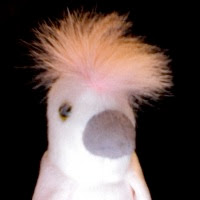Creativity — at least for part of the process — requires a special state of consciousness. In this special state, the brain is temporarily reconfigured in a way that allows most of your conscious processing power to be devoted to a single problem or question.
Any worthwhile creative project is a complicated problem that can make good use of this extra brain power. I often say that creative tasks are multidimensional problems, which means that they include several independent variables that interact with each other in nontrivial ways.
This kind of multidimensional problem can tax the capabilities of today's powerful computers, even if the problem can be precisely defined — but how often is your creative challenge precisely defined? Usually its definition is fuzzy, defined in an incomplete and imprecise way. And still, our brilliant minds can tackle these fuzzy multidimensional problems and come up with elegant solutions that are entirely new, never-seen-before creations.
Hopefully you can see why the brain would need to rewire itself temporarily in order to tackle the difficult problems that come up in creative work. In the creative state, the parts of the brain that keep track of people and relationships temporarily turn themselves into extra computational units for your creative work. So do the parts of the brain that keep track of where you are, who you are, what time it is, and the things you have to do.
Obviously, it's not safe or wise or practical to enter this creative state of mind very often. You wouldn't want to wander around unfamiliar woods in a creative state of mind, forgetting where you are, forgetting that bears are dangerous, and forgetting that you should get back home before dark. For very good reasons, evolution has created a bias against the creative state of mind, making it temporary and fragile.
The fragility of the creative state is one thing that makes our work as creative artists so delicate. We need this special, expanded state of mind in order to do our work, but we cannot force it to happen. We can't push our brains into a creative state, no matter how hard we try. And all sorts of perfectly ordinary situations, such as complicated relationships, time pressure, and anxiety about upcoming events, can prevent the creative state from occurring. If you feel time pressure, for example, the part of the brain that keeps track of time can't release itself to become an extra computational unit for your complex multidimensional problem.
After all this bad news about the creative state, I'll leave you with some good news. First of all, you're already above average in your creative capabilities. That's why you're reading this blog about creativity. For most people, this blog would be verging on nonsensical, because they've never experienced the creative state of consciousness that I'm writing about.
The second piece of good news is that you can practice entering the creative state and learn to do it more reliably over time.
And the third piece of good news is that you can actively manage the elements that are necessary for the creative state, and also proactively deal with things that are likely to interfere with the creative state. Those specifics will be the subject of my next few blog posts.
Subscribe to:
Post Comments (Atom)


No comments:
Post a Comment